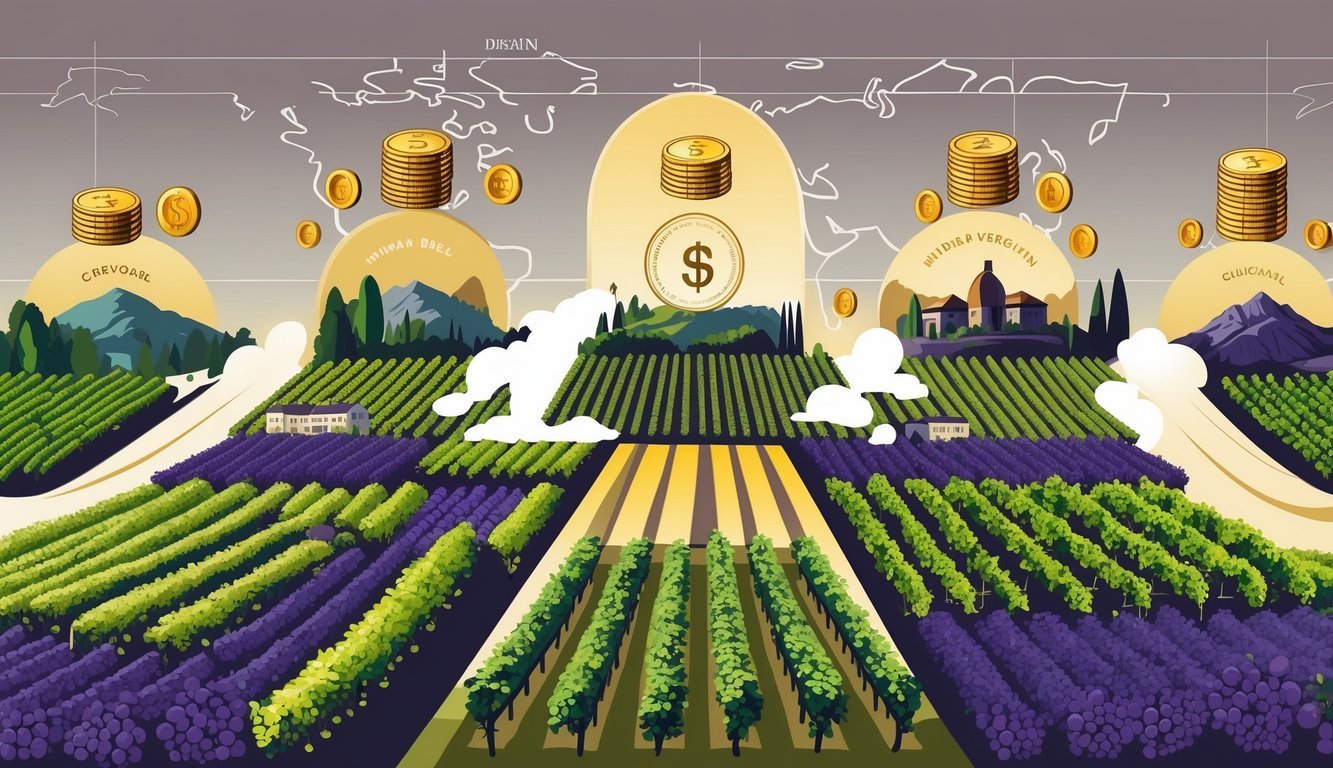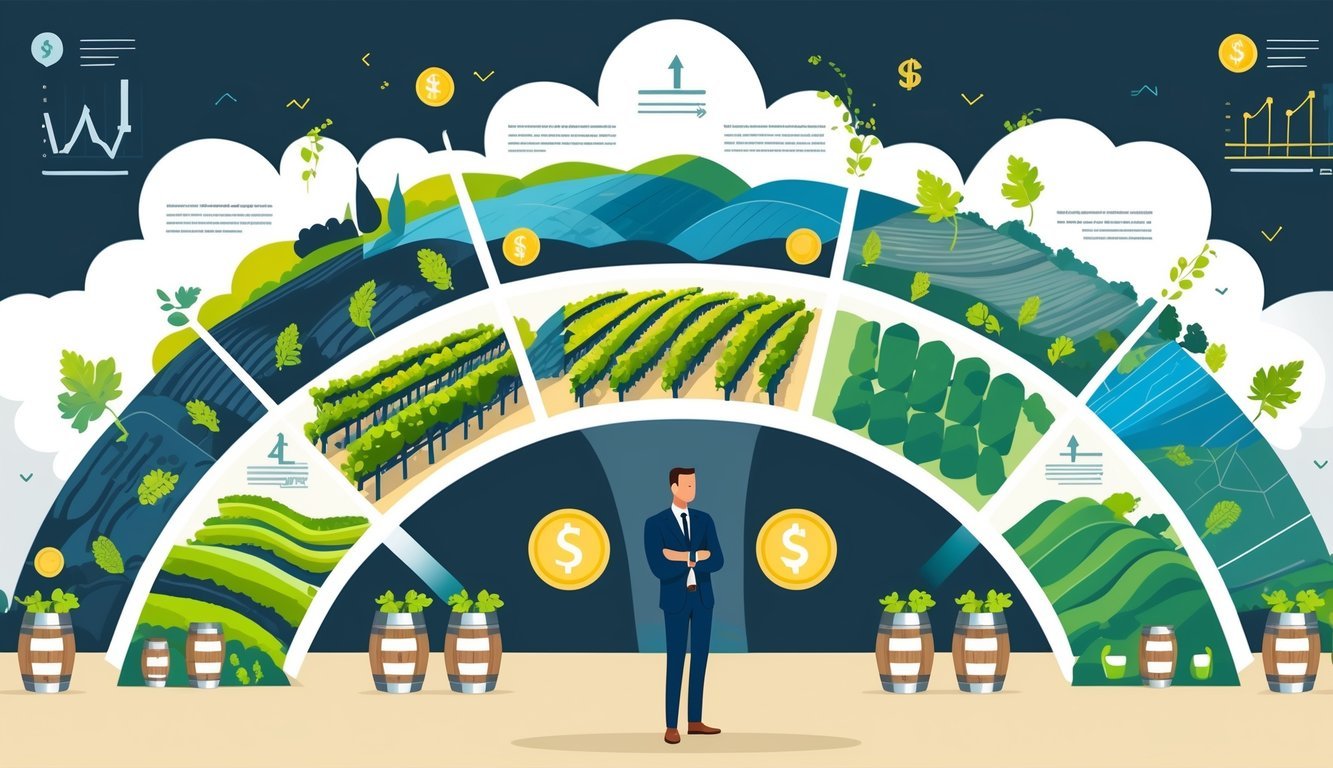PsychNewsDaily Publishers
100 Summit Drive
Burlington, MA, 01803
Telephone: (320) 349-2484
PsychNewsDaily Publishers
100 Summit Drive
Burlington, MA, 01803
Telephone: (320) 349-2484
The wine business varies significantly in profitability, influenced by regional factors, land costs, and effective expense management, making it challenging for newcomers to succeed.

If you think the wine business is easy money, you might want to think again. Wine regions vary wildly in how much they actually earn, and not all of them are raking it in. Some top wine areas bring in millions, but a lot of regions struggle with tight margins and high costs. Honestly, it’s a tough business to break into or survive in.
Why do some regions pull in more cash? It usually comes down to things like land prices, growing conditions, and how well folks keep their expenses in check.
If you don’t have the right experience or connections, you’ll probably find the wine world pretty risky for your wallet.
Even in the best wine regions, nobody guarantees you’ll make a profit. If you’re after steady money, you might be looking at the wrong business—unless you plan carefully and keep your costs on a tight leash.

Curious about the profits behind famous wine spots? Each region brings in cash from its own mix of wine sales, vineyard size, and tourist activities—think wine clubs and tasting rooms.
Napa Valley stands out as a top earner in the U.S. wine scene. Every year, it generates over $9 billion from wine sales and related activities.
Most of Napa’s money comes from premium wines like Cabernet Sauvignon—those bottles fetch high prices.
Tourism adds a lot to the region’s income. Visitors spend on tasting rooms, tours, and wine clubs.
Investing in a Napa vineyard means you’re tapping into a market with strong customer loyalty and steady demand.
Napa’s focus on quality over quantity means vineyards produce less wine, but they pull in more profit per bottle.
If you’re thinking about joining the wine industry, Napa’s high costs might make it a tough place to start.
Sonoma covers more vineyard acres than Napa but earns less—about $3.5 billion a year.
Wines here tend to be more affordable, and Sonoma offers a bigger mix of grape varieties.
Family-run wineries and a diverse tasting scene help boost Sonoma’s wine sales.
You’ll find a strong wine club culture here, which gives smaller wineries reliable income.
If you want to build a wine business with more variety and lower upfront costs, Sonoma could be a better bet.
It strikes a balance between volume and quality, attracting all kinds of wine lovers.
Washington’s wine industry, especially the Columbia Valley, brings in around $1.2 billion a year.
This region’s growing fast and is known for affordable, high-quality wines—mostly Cabernet Sauvignon and Merlot.
Prices here are generally lower than California’s top regions, but vineyards keep expanding.
Investors like Washington because costs stay lower and there’s still room for growth in wine sales and production.
Tourism’s smaller but picking up, with new tasting rooms and wine clubs popping up.
So, Washington might give you a shot at a promising market without the massive expenses of Napa or Sonoma.

Making money in wine isn’t always obvious. Profits often come from places you might overlook, like selling high-quality wines, building direct customer relationships, or thinking long-term.
High-quality wines—think Merlot or Syrah from California—can bring in better profits than cheaper bottles.
These wines attract wine lovers who don’t mind paying more for taste and branding.
Smaller batches of premium wine usually mean higher prices. Winemakers focus on quality, not just quantity.
That gives them a shot at making unique products that stand out, even if profits take a little longer.
Even though high-end wines cost more to make, they often sell for much more. That extra margin can add up over time.
Tasting rooms can be gold mines for wineries. You get to meet wine fans face to face, build loyalty, and maybe even sell more than just a bottle or two.
Wine clubs are another way to boost profits. They bring in steady income from regular shipments.
Members usually spend more over time and get to try different wines you make.
Both tasting rooms and clubs let you control your prices. You don’t have to split profits with a middleman, so you keep more money.
Plus, customers feel more connected to your winery, which is always a good thing.
Wine isn’t just a drink—it’s an investment. Vineyard land in famous regions, especially in California, often goes up in value over time.
That can add to your profits, not just from selling bottles.
Fine wines can also appreciate if you store them right. Some bottles get more valuable after a few years.
Investors sometimes treat wine like stocks or real estate. So, you don’t just make money from selling wine—you might profit by holding onto it.
If you’re patient, investing in vineyards and wine production can create steady, long-term gains.

How much you can make in wine really depends on where you are, your costs, and how well you run things.
Some vineyards earn more per acre, but profits usually stay low unless you’ve got a solid plan.
Income varies a lot by region and grape type. On average, vineyards might earn anywhere from a few hundred to several thousand dollars per acre.
High-quality grapes sell for more, but expenses like labor and land can eat into those earnings.
Owning a winery usually isn’t a big money-maker. Most wineries see single-digit returns unless they have strong sales and tight supply chains.
A lot of small wineries struggle to cover all their costs.
Start by learning as much as you can about winemaking and the market. Build strong supply chains and find reliable ways to sell your wine.
Focus on quality and find a niche to stand out from the heavy competition.
It can be profitable if you control costs and sell at good prices. But many vineyards struggle because of high expenses and tough competition.
Profit is possible, but it’s definitely not guaranteed.
Top earners usually have strong brands, wide distribution, and high-quality products.
They’ve got experience and efficient supply chains. Big players can also afford better marketing and distribution.
Most restaurants mark up wine by about 200% to 300%. That sounds wild, right?
But wineries themselves make much less on each bottle. The margin really depends on the size of the winery and how they’re selling the wine.